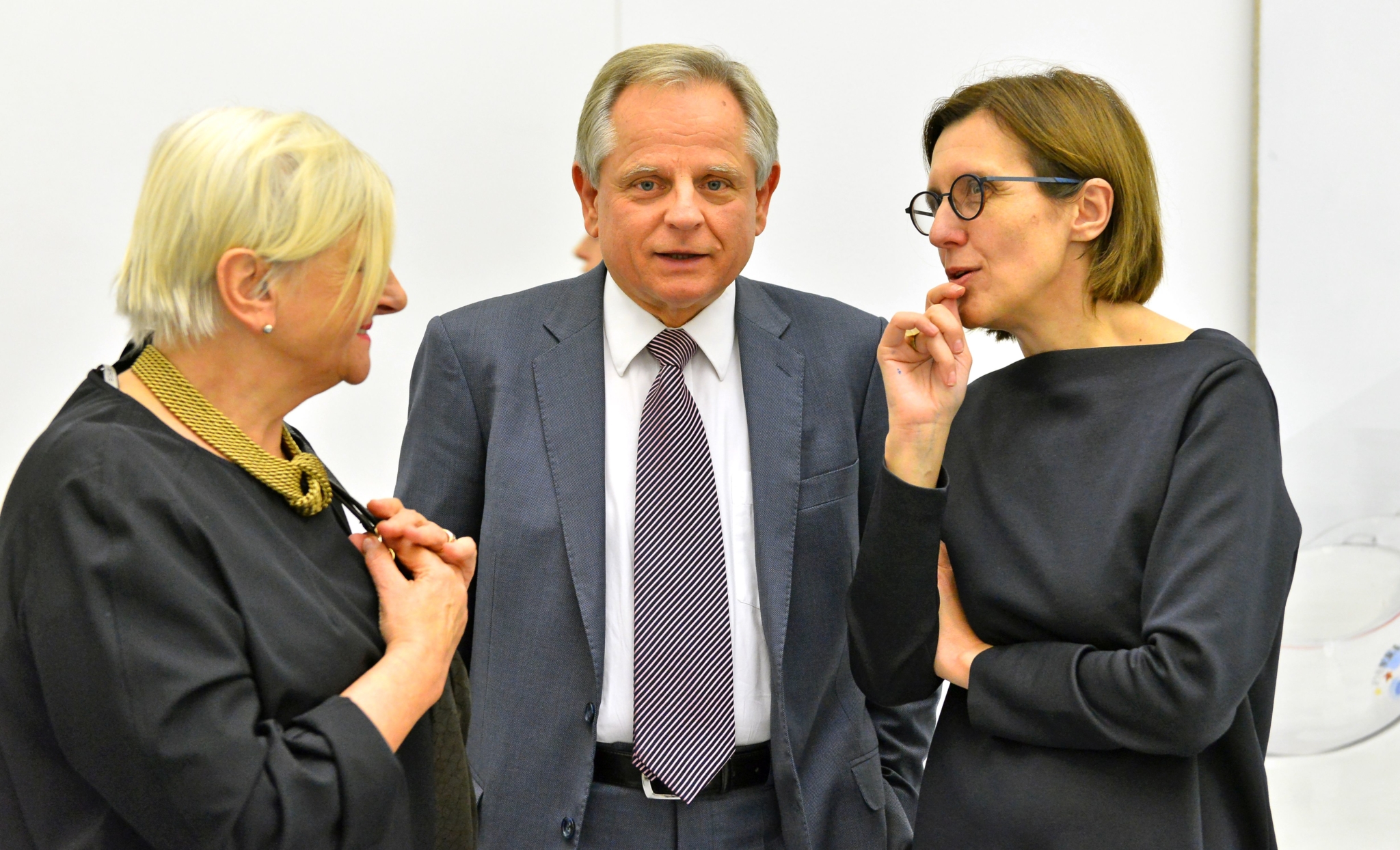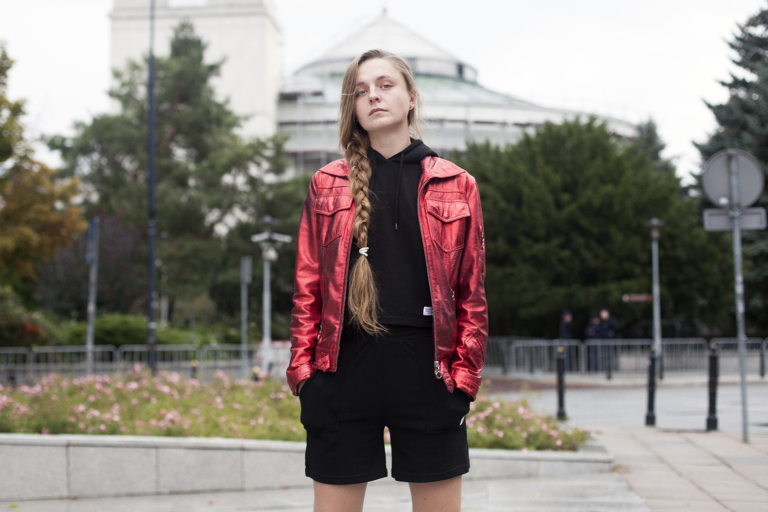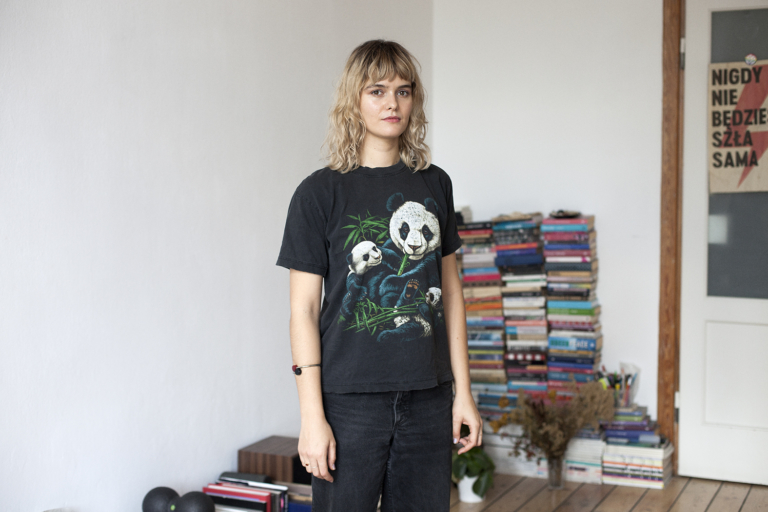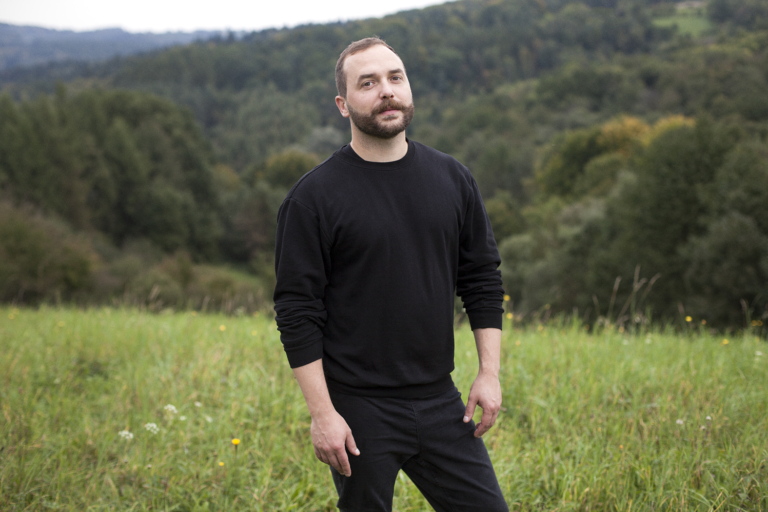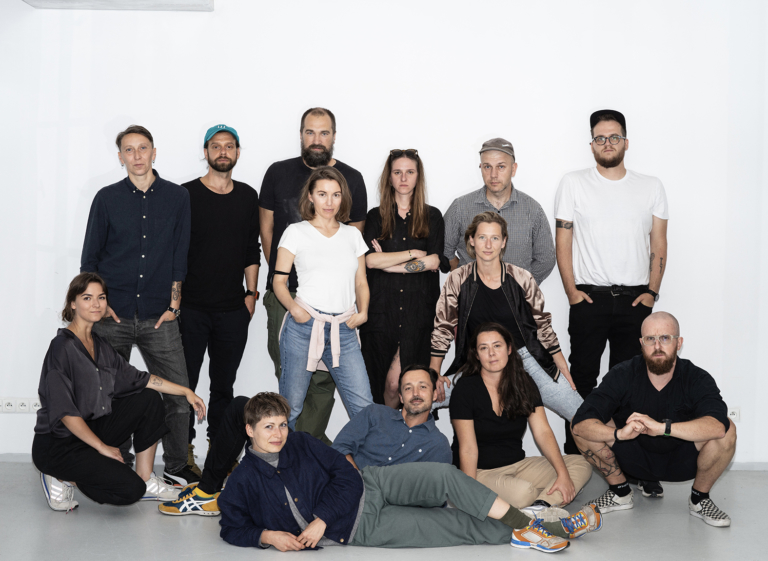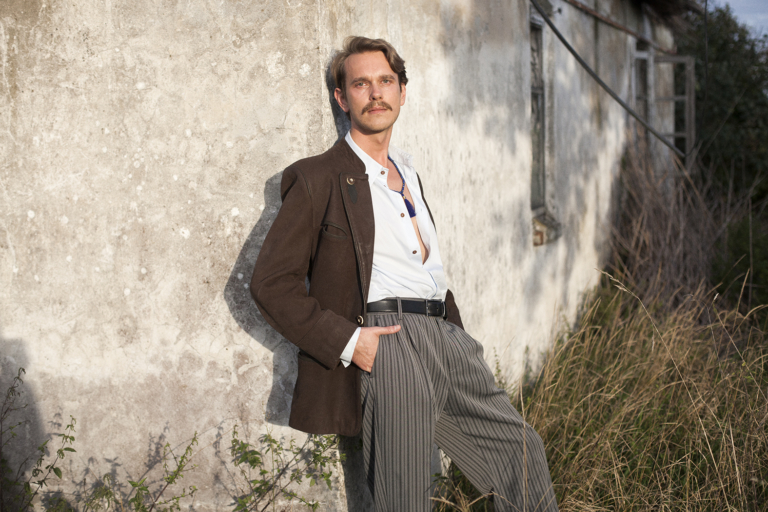No. 33
The competition was for the artists, the exhibitions for the public
Krzysztof Kalicki and Hanna Wróblewska talk to Marta Miś
The year 2003 saw the first edition of Views – the competition for young artists organised by the Zachęta and Deutsche Bank. Almost 20 years have passed, and this year we are having the 10th and last edition. This is a good opportunity for summaries and memories. So how did it all begin?
Hanna Wróblewska: Deutsche Bank approached the Zachęta with the idea. I can remember that Anna Rybałtowska came to the meeting and said that the bank wanted to invest in a joint action. Their only condition was that the curator had to be Maria Morzuch from the Art Museum in Łódź. But how did Maria find her way to Deutsche Bank…?
Krzysztof Kalicki: She met Dr. Tessen von Heydebreck, who was a member of the management board of Deutsche Bank AG (“DB”) and head of the supervisory board of Deutsche Bank Polska (“DB Polska”), and an art aficionado. The bank’s CSR [Corporate Social Responsibility] activity was very close to his heart. The only question was how to spend the funds to be consistent with DB’s vision and policy of sponsorship. The bank invested in the future and openness to young people for whom it also offered access to international markets. DB Polska received its banking license in 1995. At that time, we were hiring very young people and they created the atmosphere of this place. We knew we had to do something… For example, earlier the bank supported hospitals in the cities where it opened its branches. Dr. von Heydebreck, whose family came from Pomerania and was very fond of Poland, came to me with an offer to invest in Polish art. I liked this idea very much because we wanted to do something of significance for Polish culture.
And this is how the Zachęta appeared.
KK: Yes, we went to the Zachęta, which was then headed by Agnieszka Morawińska. We set down to discuss the idea and agreed to organize a biennial competition for young artists up to 36 years of age. It was also decided that the competition would be financed both by us, Deutsche Bank Polska, and the Deutsche Bank Foundation. We named it Views, but we left the artistic part to the Zachęta.
HW: The artists were selected by a nominating committee. Our job was to make sure that the committee was made up of experts – curators and critics from various regions of Poland. The Zachęta took the competition very seriously – to treat everyone fairly. But all the time the burden of the partner, the burden of the reward was looming there. The artists felt anxious because it was a corporation. And we were afraid that the press wouldn’t want to write about the competition because of Deutsche Bank. Today these fears seem ridiculous.
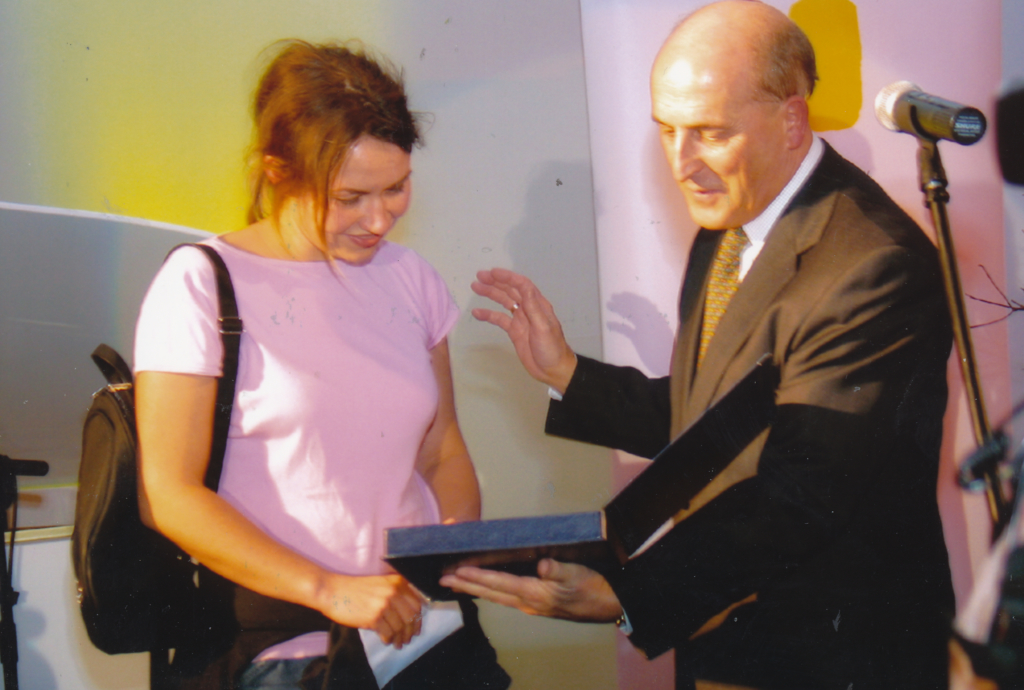
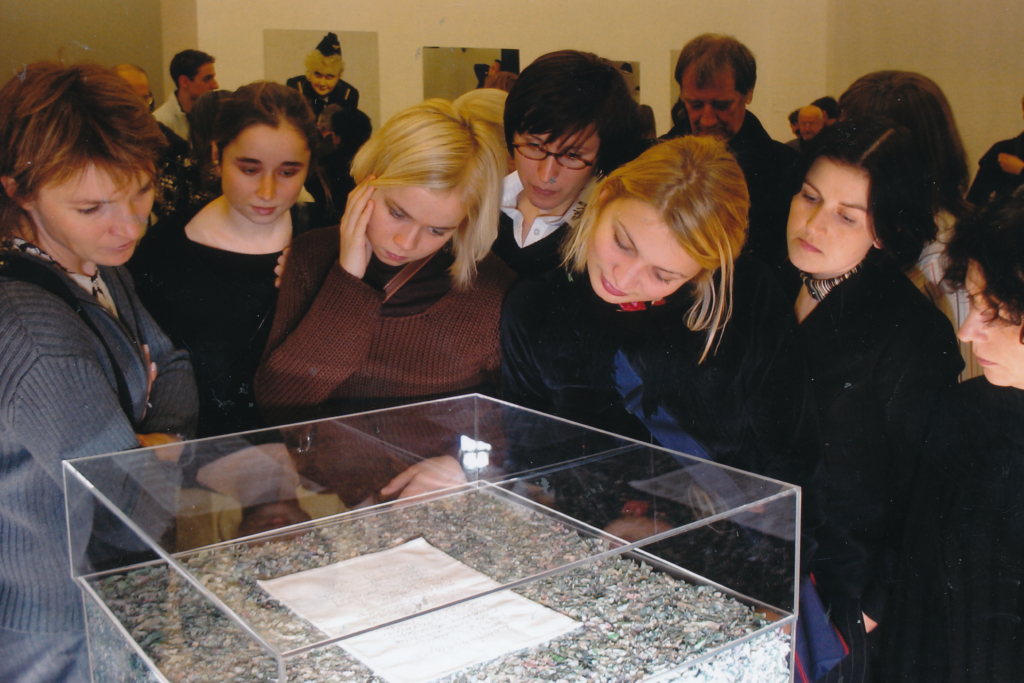
And this first exhibition, curated by Maria Morzuch, was held.
KK: It turned out that the exhibition attracted considerable interest, also in the press. I can remember that the guests invited by the bank were sometimes shocked because they expected to see traditional art, and often were confronted with videos or performances, rather than paintings. Over those almost 20 years I have learned to appreciate contemporary art, but I remember that some businesspeople invited by us initially were not enthusiastic. On the other hand, young people reacted enthusiastically. The competition opening ceremonies gathered lots of people. We even received an award for supporting Polish culture from Minister Ujazdowski. I think the support was very important. A prestigious award in the Views competition helped artists advance their careers, often becoming a ticket to the world’s biggest galleries. On the occasion of 10 years of our cooperation, we organized the exhibition Common Affairs at the Deutsche Bank Kunsthalle in Berlin. We believed that it was important and many people confirmed our belief, but at the beginning no one in the bank predicted that it would continue for so many years.
HW: Really?
KK: Really… But later it became almost a tradition. And a great legacy. The names that participated in the competition – until today these are artists recognized not only in Poland, but also internationally. We have tried to preserve the competition, but unfortunately the pandemic and the numerous challenges resulting from it made the bank decide to allocate all financial resources to broadly understood social initiatives, especially addressed to those who need support the most.
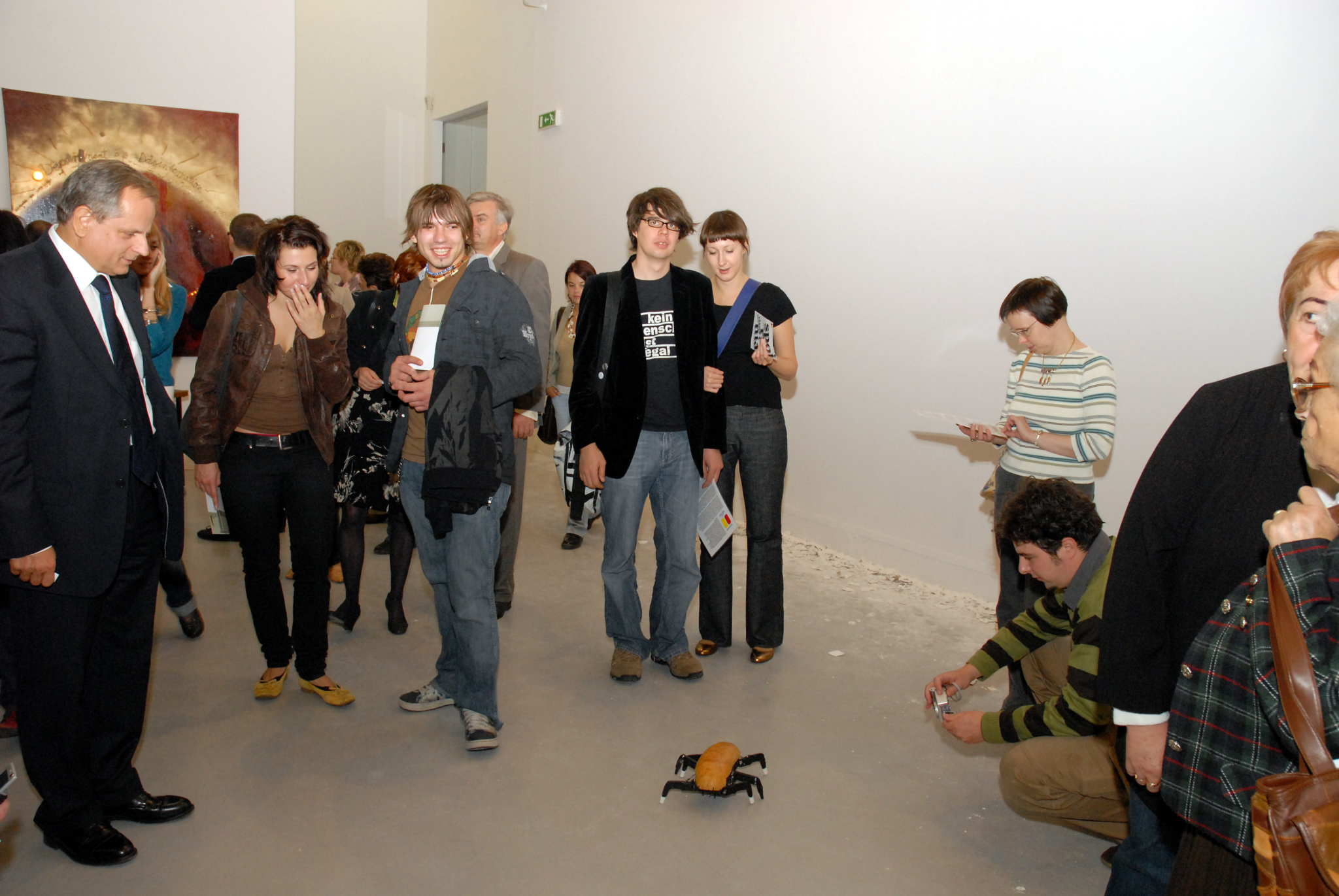
Some of the editions were held under the full name of Views – Deutsche Bank Foundation Award. Then the foundation’s name disappeared.
KK: As I’ve mentioned, we tried to carry the burden ourselves, looking for various savings, because it’s not only awards – with the main prize of €15,000 and the second, a study stay at Villa Romana in Florence – it was primarily the cost of producing the exhibition. Unfortunately, it turned out to be a heavy burden.
HW: But, which is very important, it was one of the few long-term activities in the field of art in Poland. It was not merely a one-off event – one exhibition. But hard work.
KK: Something that was triggered by various coincidences has become an enduring value. And we’ve been working to make it permanent. Twenty years is a span of one generation. Even for that reason, I believe it’s been a success. I remember that our various guests curious what the artist had on their mind. And sometimes the answers were surprising. But, these were not exhibitions that left the viewer indifferent. The bank’s corporate clients have talked a lot about Views. And I sometimes played the role of an educator. Just like Ms Director acted towards me. [laughs]
HW: We need to remember that we started in 2003, when Polish art was gaining some more familiarity (even in Poland). It was no longer associated only with scandals. On the one hand, as an award and exhibition, it was an activity targeting the artistic community. On the other hand, we also wanted to educate a wider audience. We were saying: “Look, these are young artists, their voice will be important in a moment!” The PR campaign around the award didn’t merely aim to serve the bank or us, but also to reach the audience that had already started to be interested in young Polish art. And what was cool – it gave it a stamp of being “important.”
And what impressions did Tessen von Heydebreck and the people from the Deutsche Bank Foundation have, whose main job in the bank was to take care of the cultural sector?
KK: For Dr. von Heydebreck and the foundation the Views Award was one of the bank’s most important projects in Central and Eastern Europe. They were proud of it. I have never heard any criticism of the artistic aspect or organization. Anyway, they didn’t lose interest in the competition. Dr. Tessen von Heydebreck would come to our galas even when no longer was President of the Deutsche Bank Foundation.
HW: Initially, the Deutsche Bank Foundation also had its seat on the jury. It was composed of the Villa Romana’s manager, Angelika Stepken, and Britta Färber, curator of the Deutsche Bank collection, who made sure that her voice was only advisory. She left the decision to jurors from outside the institution. I remember that Britta was on the jury in 2007, when Rafał Jakubowicz carved the Deutsche Bank logo in the wall – she really appreciated this work and had no problem with the criticism of the institution.
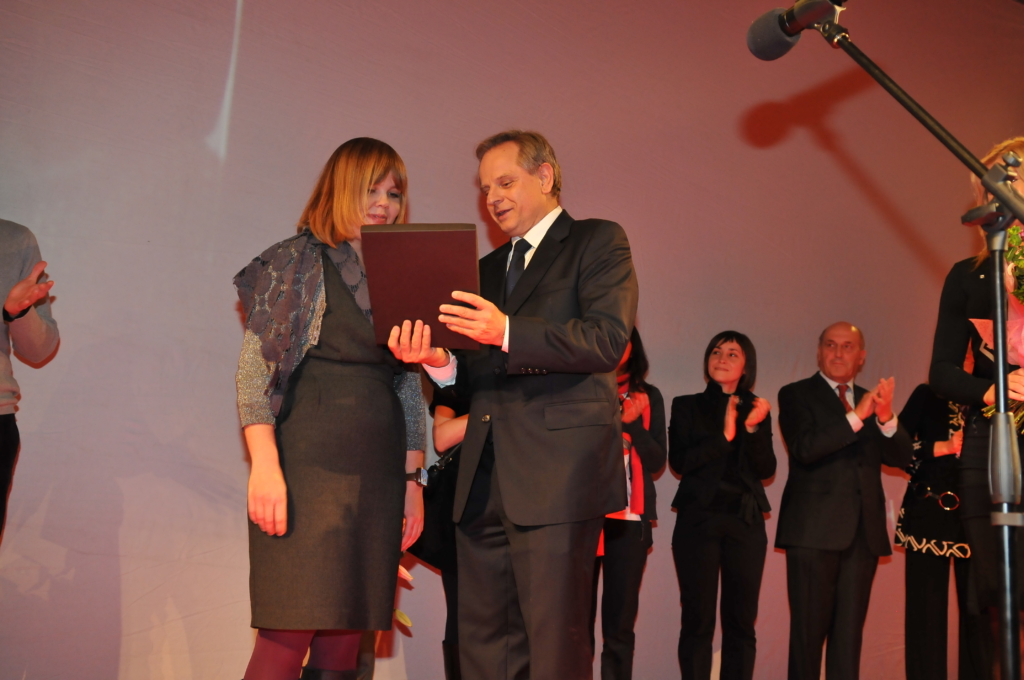
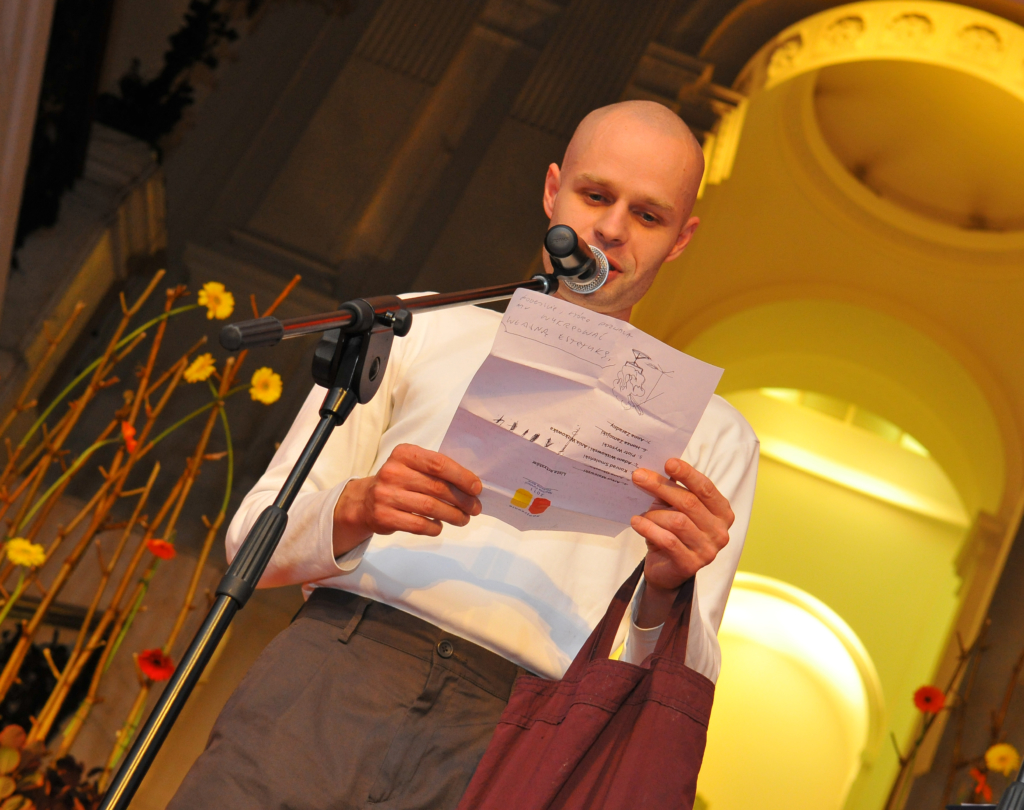
Coming back to the technical aspects of the competition, what was the sponsor’s money for?
HW: For the production of works, fees, and awards. What is cool when we look at the history of the competition – the artists tried not to participate simply in some kind of rivalry or contest. They tried to play together. It was quite clearly visible during the first exhibition, which took place in the Zachęta’s three lower rooms, and almost no one was there, because everyone wanted to be outside the exhibition space. Julita Wójcik in front of the Zachęta building, Paweł Althamer in the cloakroom, Cezary Bodzianowski in the office part. And at each competition, we had artists who showed that they were happy to be nominated, but distanced themselves from the idea of competition.
From the curator’s point of view, these exhibitions were not easy.
HW: The curators had a difficult job to do, because they didn’t choose artists, but worked with people who had already been selected, and they had to negotiate works with the seven or later five artists. The artists distanced themselves, did not compete, but on the other hand, when they come to produce and show their work at an exhibition, there is an element of competing for space and struggling with the curator. But I think that curators were quite smart to put themselves in the position of guardians. rather than authors of the exhibitions.
And what about the tensions that resulted from the misunderstanding that the competition was evaluated non on the basis of the exhibition, but the artistic output of the nominees from the preceding two years?
HW: That’s why we had the audience award. Because the exhibition was not for the artists or for us, but for the public. It was intended to present artists who might not sell their works for millions, but already had some achievements and were established in the art scene. Quite often people come to the exhibition expecting fireworks. But exhibitions are not made of fireworks. We show various works, talk about artists and say: “Come and see, they are interesting. They deserve your attention.”
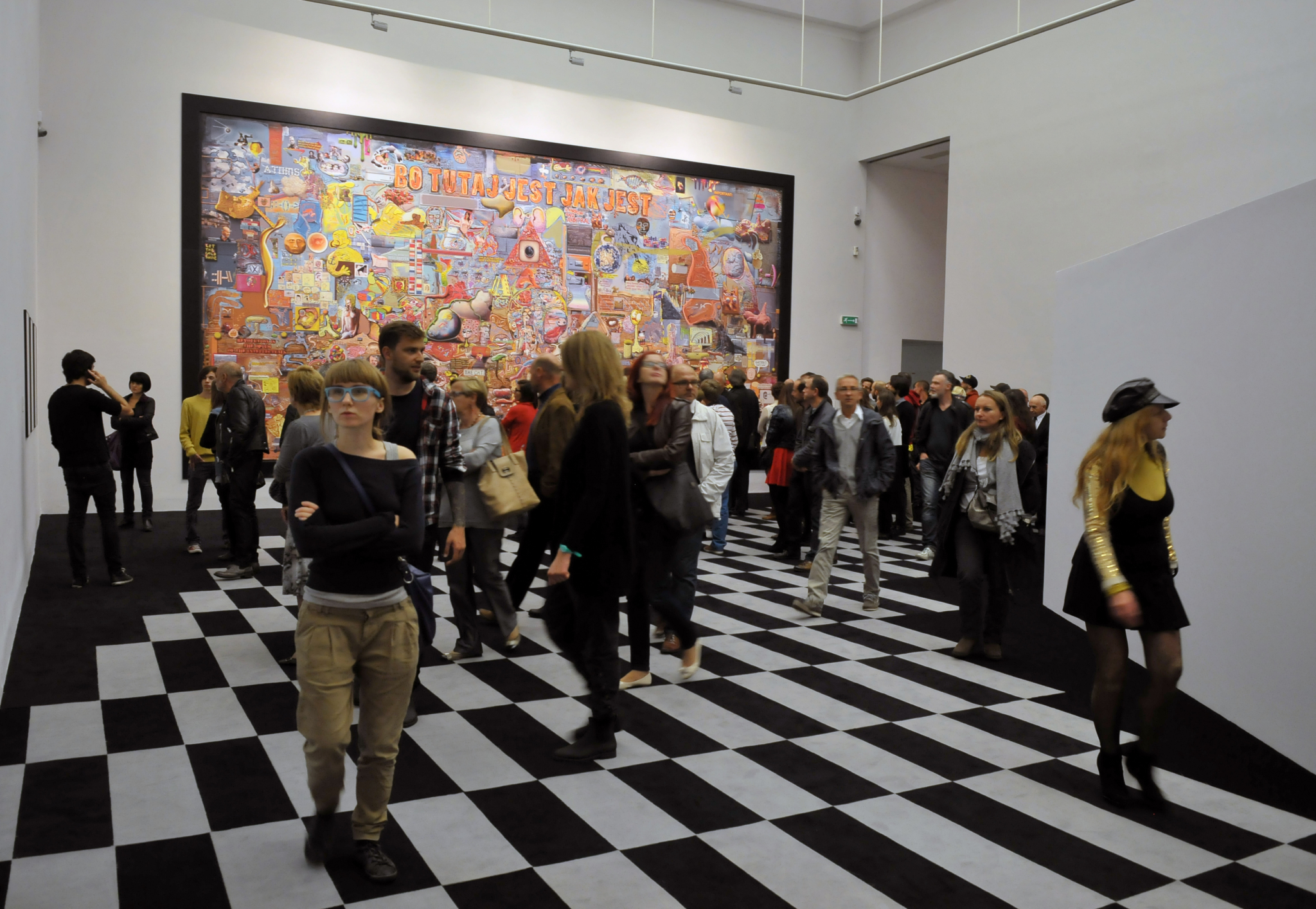
The curator of the first Views was the already mentioned Maria Morzuch. What was the key to inviting the curators of the next editions?
HW: We tried to alternate inviting curators from the outside and inside of the Zachęta. That is why the second exhibition was curated by Magda Kardasz, the next by Monika Szewczyk from the Arsenał Gallery in Białystok, then by Maria Brewińska, Daniel Muzyczuk, Ewa Łączyńska-Widz and Jadwiga Sawicka, Katarzyna Kołodziej and Magdalena Komornicka, Dorota Monkiewicz, and Michał Jachuła. Magdalena Komornicka is again the curator of this year’s last edition organized under the pandemic guidelines without the exhibition.
On both sides – the bank and the gallery – we had people involved in the competition. This is probably a good time to mention them.
KK: On the bank’s side, it was the already mentioned Anna Rybałtowska, then Anna Danilewicz-Wójcik, Emilia Szok, Sabina Salamon and Aleksandra Rozhin. Without them, we wouldn’t have the competition, because there would be no one at the bank to organize it from the bureaucratic and financial side.
HW: At the Zachęta, Julia Leopold was responsible for the first competition exhibitions, followed by Katarzyna Kołodziej, and from 2017 – Maria Świerżewska. They not only assisted the curators, were responsible for the production of exhibitions, but also supervised the organization of the competition – the meetings of the nominating committee and the jury.
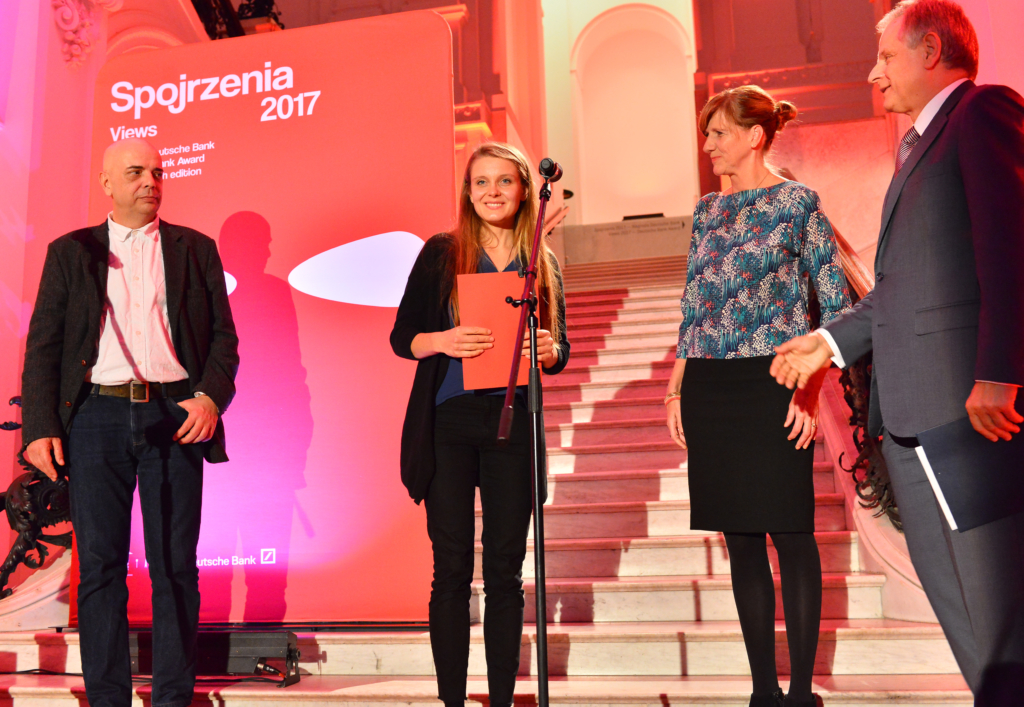
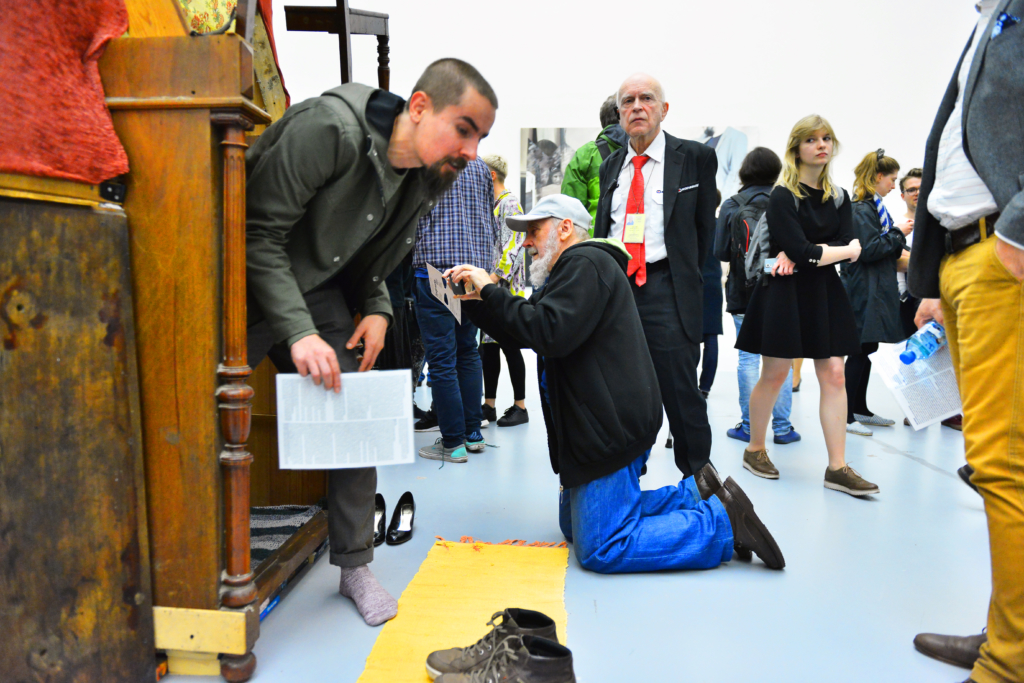
The gala has always been an important element of the competition.
HW: The gala has been important because it has also been event for the bank and its clients. In a competition system where artists are nominated and there is an exhibition, it would be unfair to choose the winner right away – unfair even to the artists. That is why you had the time from the announcement of the nomination and the opening of the exhibition, followed by the choice made by the jury. And the gala emphasized this choice.
Can you remember one work in particular from among all the editions?
KK: Loaves of bread crawling on the floor. But I can’t remember the artist’s name …
HW: Janek Simon, the winner of the third edition Views. And I mainly remember checking if we had any paintings represented. Just to please Mr President. [laughs]
KK: And we didn’t. The art world has been moving towards various kinds of media, but not towards painting. [laughs]
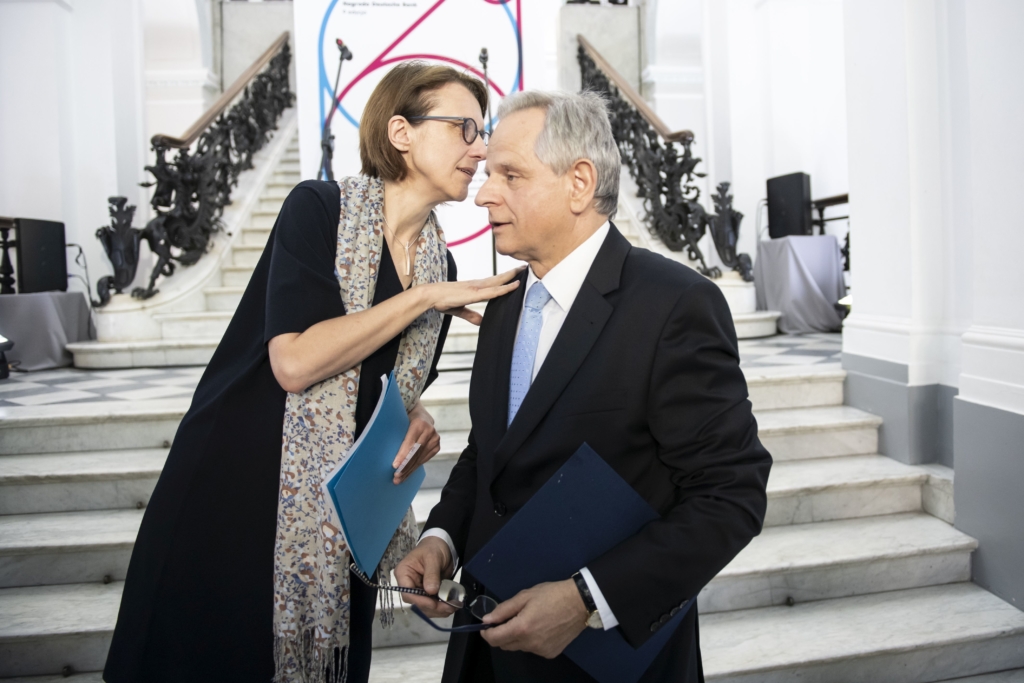
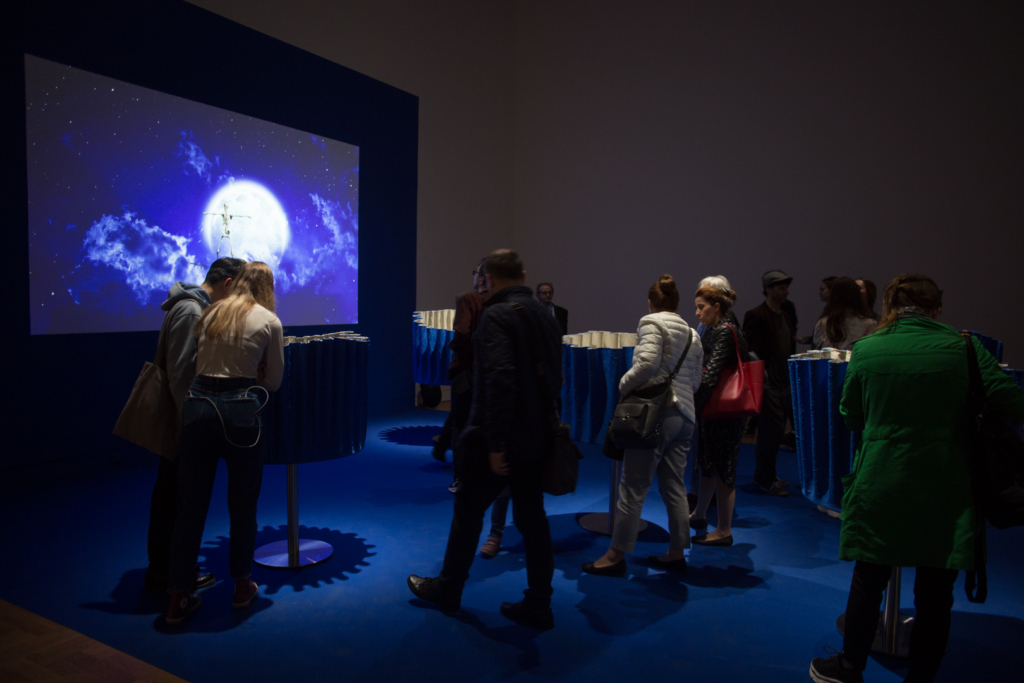
Krzysztof Kalicki — doctor of economics (dr hab.), professor at Kozminski University, in 1994–1996 secretary of state in the Ministry of Finance, long-term President of the management board of Deutsche Bank in Poland, currently Vice-Chairman of the supervisory board of Deutsche Bank Polska.
Hanna Wróblewska – art historian, exhibition curator, in 2003–2010 Deputy Director, and from 2010 Director of the Zachęta – National Gallery of Art and commissioner of the Polish Pavilion in Ve
nice.

